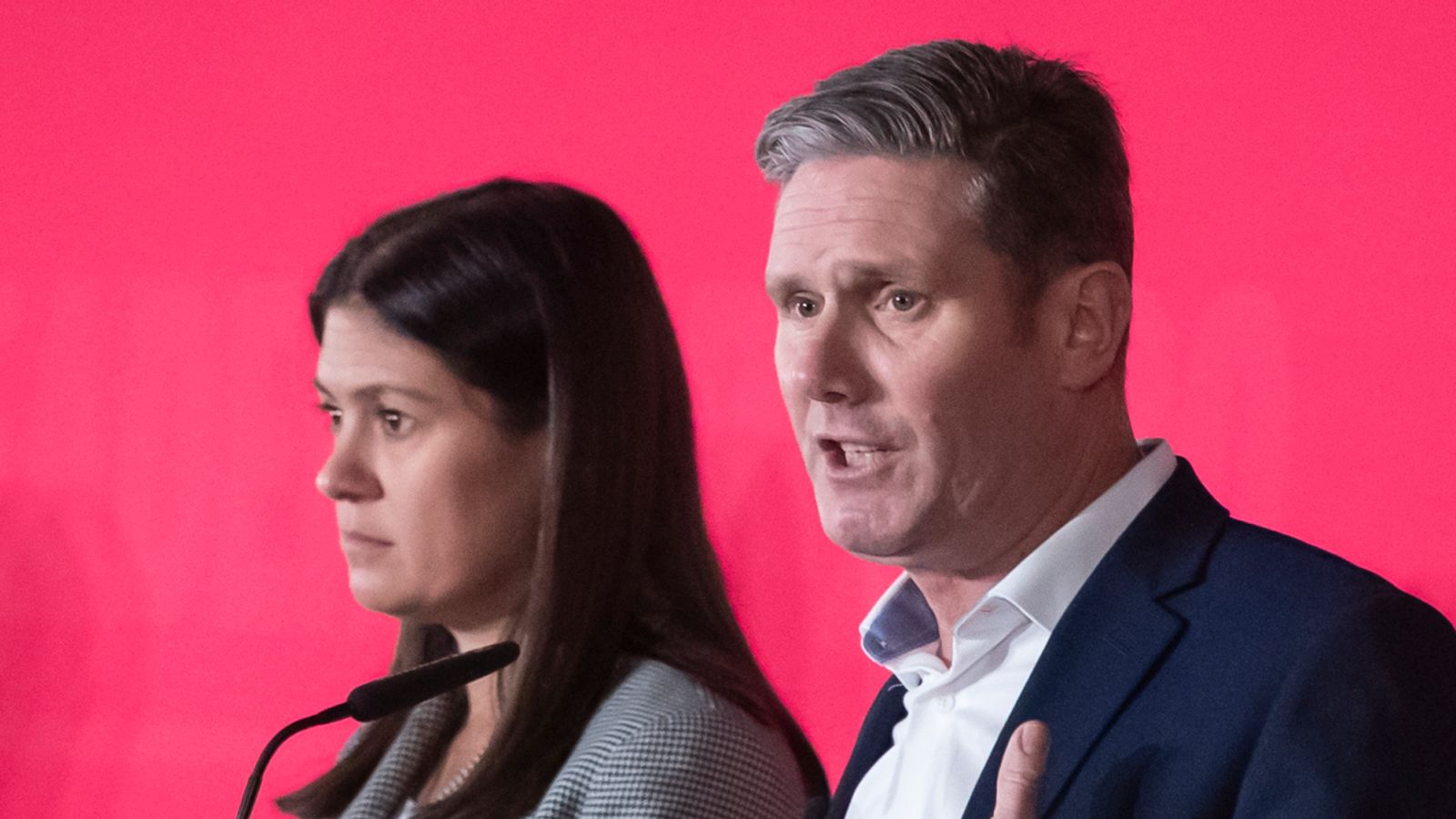Sir Keir Starmer put past government experience and an appetite for public service reform at the heart of his reshuffle.
The result was more wins for those on the right of the party, reflecting the “change” since the Corbyn years.
The Labour leader has made clear the reshuffle, the first full-blown reset of his top team since May 2021, put his “strongest possible players on the pitch” and represented a government in waiting “determined to solve the challenges we have”.
He left the top three jobs – shadow chancellor, home secretary and foreign secretary – untouched, but brought in a handful of fresh faces and showed his ruthlessness by demoting those suspected of briefing against him.
Hilary Benn, a former cabinet minister under Tony Blair and Gordon Brown and a big figure in Labour politics, returns to the frontline with the Northern Ireland role. He will steady the nerves of the party as his appointment represents the endorsement of Sir Keir by a serious figure not associated with the factionalism of his father, Tony Benn.
PM backs Keegan after sweary outburst – politics latest
Liz Kendall, who was a special adviser in the last Labour government, gets the work and pensions brief – while Pat McFadden gets a big upgrade after being made campaign chief with a Cabinet Office portfolio. Both figures are identified with the Blair wing of the Labour Party, who were uncomfortable during the Corbyn years and can antagonise some on the left.
Labour reshuffle: The promotions and demotions in Starmer’s top team as election looms
Adam Boulton: Donald Trump’s cosy Carlson interview shows why carefully curated TV debates are needed on both sides of the Atlantic
Andrew Malkinson: Sir Keir Starmer urged to co-operate with potential public inquiry into ‘appalling’ miscarriage of justice
Deputy leader Angela Rayner emerges “score-draw” with what some claim is a mid-level role – shadowing the Department for Levelling Up – but holds onto the work brief so unions will be relieved, and she gets Deputy PM moniker officially.
Allies of Sir Keir reject this suggestion, saying the levelling up brief encompasses some of Labour’s highest priorities on social justice, housing and planning – but everyone will be looking to Ms Rayner to publicly demonstrate her enthusiasm for the new role.
Read more:
The promotions and demotions in full
SNP reshuffles its frontbench too
Please use Chrome browser for a more accessible video player
The biggest loser was one-time leadership contender Lisa Nandy, whose personal relationship with Sir Keir never recovered after the leadership race.
I’m told the conversation was tricky: initially the Labour leader just said he wanted her to do this role and bigged it up. Ms Nandy then said “it sounds like you don’t really want me” and he effectively admitted that. Swallowing her pride, however, subsequently she put out a statement saying she’s a team player and accepted the job – the number two in the Foreign Office, shadowing international development with the right to attend cabinet.
One figure called it a “factional takeover” by some on the right of the party – the balance of the top team certainly very different to the shadow cabinet he appointed when he took over in 2020.
Some will point to the influence of the backroom campaign chief Morgan McSweeney, who has a fractious relationship with the left of the party, though often Labour staff members can become bogeymen for elected politicians not wanted to blame the leader themselves.
But most of all, Sir Keir will be relieved it is over. In May 2021, his first big reshuffle went awry when a series of figures from Ms Rayner downwards refused to move and he had to back down.
Asked how it felt, the Labour leader told me: “I was really pleased that we started at nine o’clock this morning. We’d finished by half past 12. And everybody’s pleased with the position they’ve now got in the shadow cabinet. I’m very, very pleased with this reshuffle.”
The body language suggests he was indeed happy with the result.





